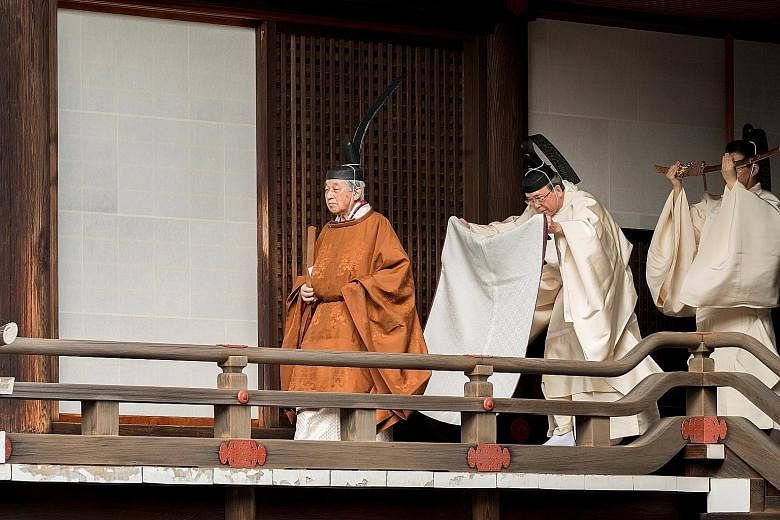TOKYO • Japan yesterday began a series of ceremonies leading up to Emperor Akihito's abdication on April 30, the first in nearly 200 years.
The 85-year-old monarch, in formal court dress traditionally worn by emperors, visited a sanctuary in Tokyo's Imperial Palace for a ritual in which he announced his abdication to ancestors and deities.
The sanctuary, Kashikodokoro, is a place of worship for the goddess Amaterasu Omikami, the imperial family's ancestral deity.
Ritual sceptre in hand, Emperor Akihito walked around a cloister before going behind a bamboo blind and bowing. He read out a statement that he will abdicate the throne on April 30. Crown Prince Naruhito will succeed him the next day.
The Emperor also visited and bowed at other sanctuaries: the Koreiden, enshrining emperors and imperial families, and the Shinden, enshrining deities. The Empress, suffering from a spinal condition, offered prayers at her residence.
The Emperor will also announce his abdication at the tomb of Emperor Jimmu on March 26 and the shrines of Ise Jingu on April 18.
Akihito voiced his desire to step down in 2016, citing age and health issues. Under Japan's Constitution, the emperor is a symbol of the state and people and has no political power. His duties include performing rites at Shinto ceremonies and the opening of Parliament.
YOMIURI SHIMBUN/ASIA NEWS NETWORK

